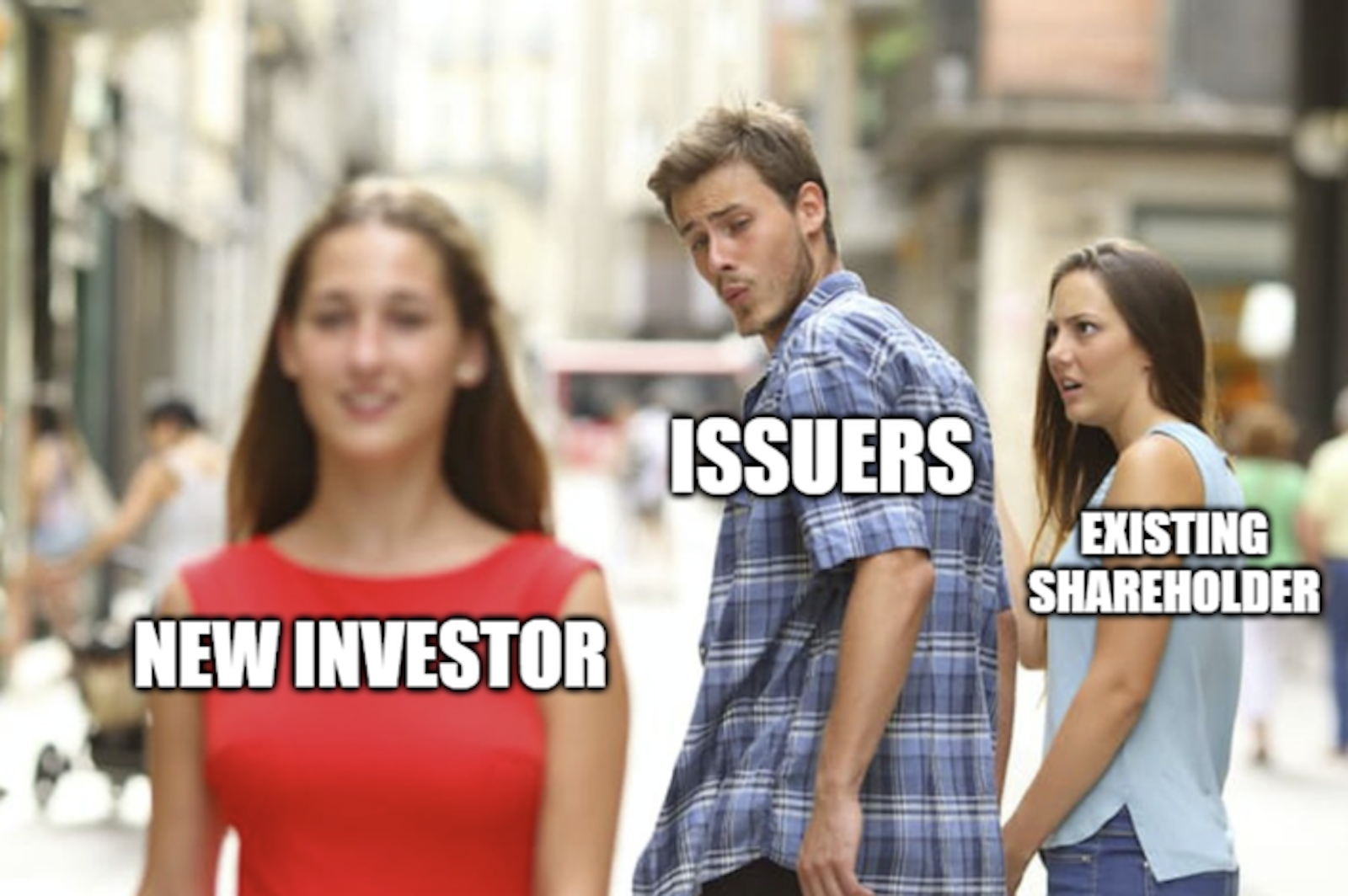

Do you remember that time when a bunch of Americans outed themselves as people who throw out their dishes rather than wash them? It was labelled online as laziness and wastefulness epitomised, but if I'm honest, something similar is happening in capital markets today.
There is an imbalance in capital markets. For all the time issuers spend on acquiring new shareholders, there are little to no resources spent on shareholder retention. Many issuers would rather spend thousands of dollars and hours attracting new investors at exhibitions and roadshows rather than investing in stopping shareholder churn.
Today's article is about the untapped opportunity of shareholder retention and how being proactive and personalised in your shareholder engagement strategy will unlock an efficient and practical approach to capital markets strategy.

Churn. It's a dirty word (unless we're talking about dairy products) that most companies seek to avoid. Unfortunately for public companies, it's a chronic problem.
What is shareholder churn? Simply put, it's when a shareholder sells their entire position in your company. And while investor downgrading (when a shareholder reduces their holdings in your company) can be unavoidable, companies should avoid investor churn at all costs.
There are all sorts of reasons why investors might churn, but the most common one is that they've lost belief in your company. Maybe they don't think you have a good strategy or are unhappy with the current management team. Either way, most issuers do not have a plan to prevent churn, and their capital markets performance is suffering as a result.
There are several reasons why an investor might churn. The ultimate reason is that they no longer believe their money is better off in your company than elsewhere. Contributing factors may be because they're satisfied with the profits they've generated from their investment, or they may no longer believe that the risk of holding your stock is worth the potential reward.
Churn is like a disease: if its symptoms are caught early, you can nip it in the bud with some minor treatment. The great thing about churn is that downsizing is a reliably evident symptom. If a shareholder is downsizing, they're likely to churn soon.
Therefore, being proactive about shareholder churn involves engaging with your shareholders as soon as they downsize to increase their conviction in your company and decrease their desire to close their position. This act of personalised proactivity (i.e. you reaching out to them personally) is an effective standalone churn prevention tactic (more on that later). Still, if more persuasion is needed, you have an opportunity to do so that you didn't have before.
By communicating with your shareholders, you're also identifying the reason they're churning. Over time, frequent communication will help you and your IR team understand the factors causing a decrease in investor conviction. With that understanding, you can prevent churn in the long term by addressing any critical issues for investors.
Churn prevention strategies like these can have a considerable impact on your company. By showing a little love, your investors will give it back with less selling, more advocacy, and even more on-market buying pressure.

Imagine if you could identify when a shareholder started downsizing and proactively reached out to them. You'd better understand why they were selling and ultimately prevent them from selling.
When we built InvestorHub, we knew that this was a critical problem that wasn't easy for companies to solve. So we have a platform that enables issuers to be proactive and personalised in their approach to preventing churn. This exact scenario recently happened with one of our clients.
The client identified a top 50 shareholder who had started downsizing and reached out to them.
By reaching out, they could better understand why they were selling, and ultimately, the shareholder stopped selling due to the proactive response from the issuer. It is a terrific success story and proves that being proactive can pay off.
Would I ever leave you without a list of actionable tips? Here's how you can implement a churn prevention strategy starting from Monday:
The best way to combat investor churn is to be proactive with your shareholder engagement strategy. It means being personalised and responsive to your retail investors and addressing their needs and concerns. By being proactive, you show your shareholders that you value their input and are committed to maintaining a positive relationship with them. Who'd want to sell after that?!

Subscribe to access weekly insights, exclusive playbooks, and time-saving tricks
that make growing public companies easier.
It's free. Unsubscribe anytime.